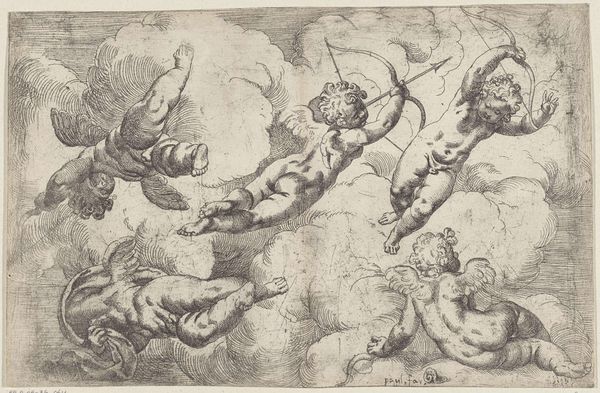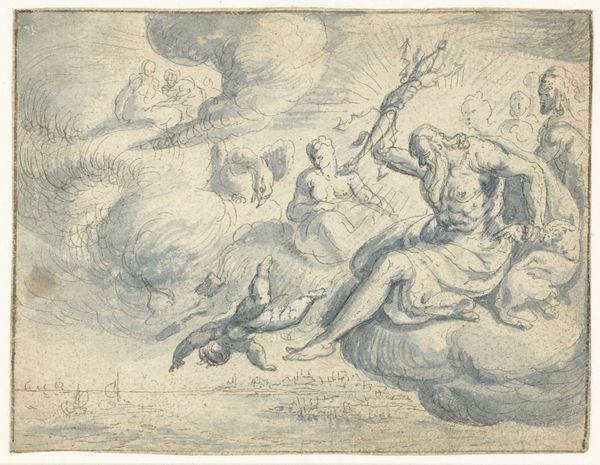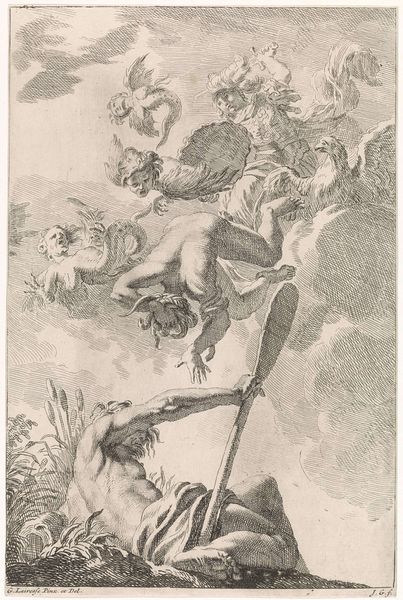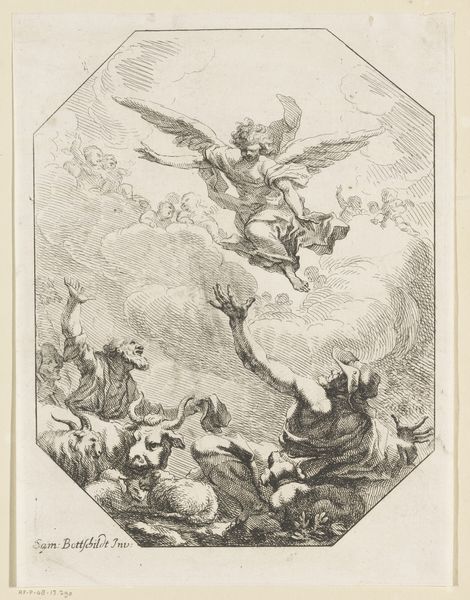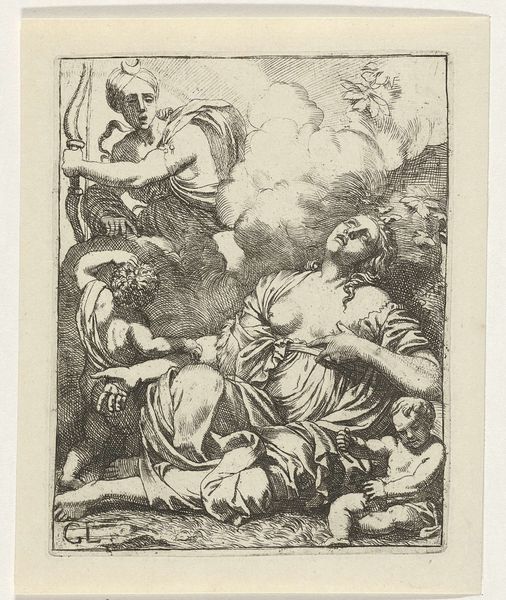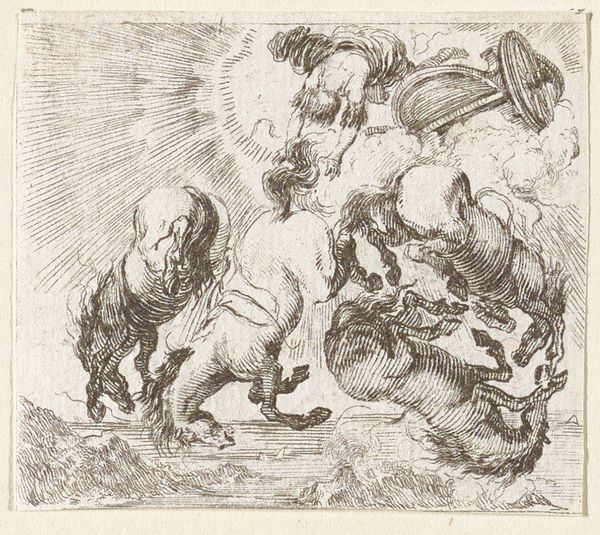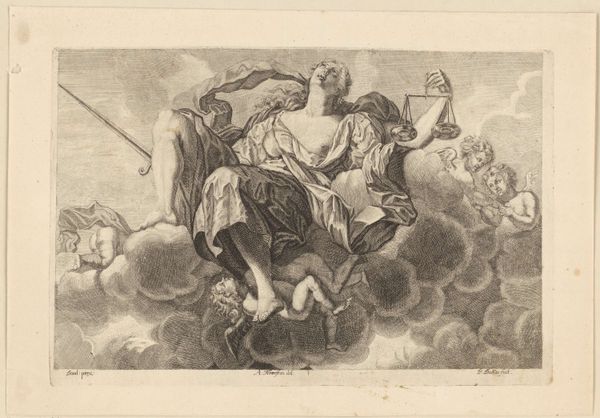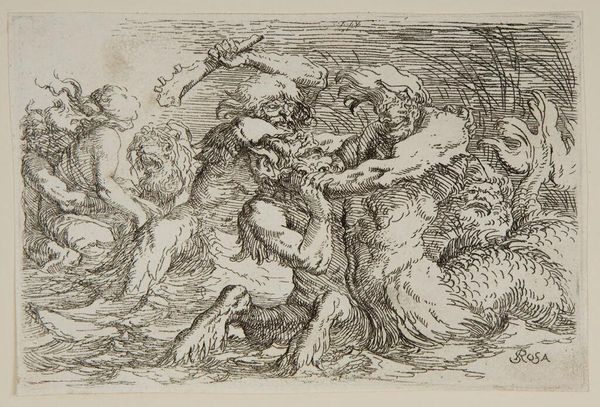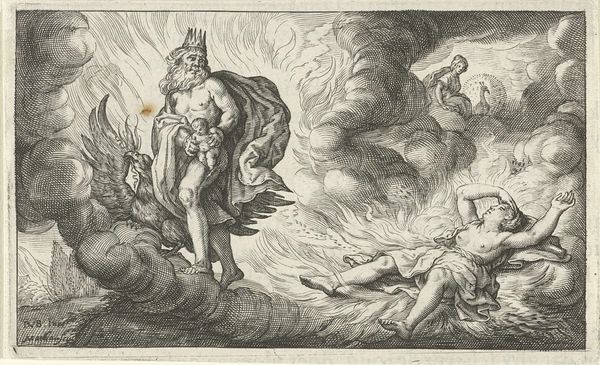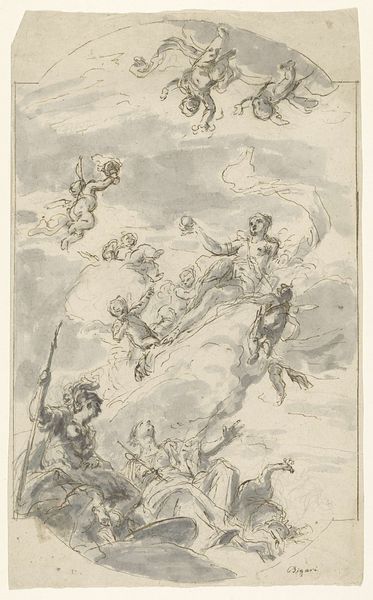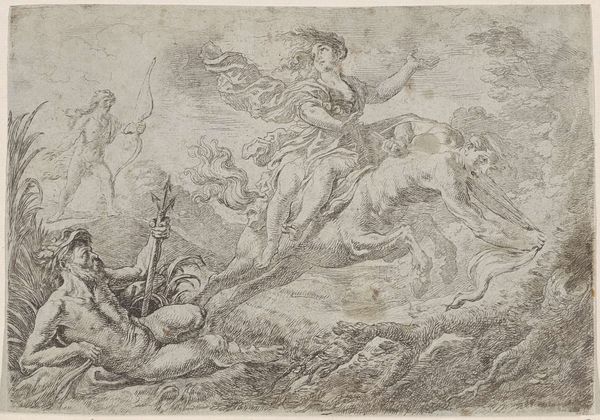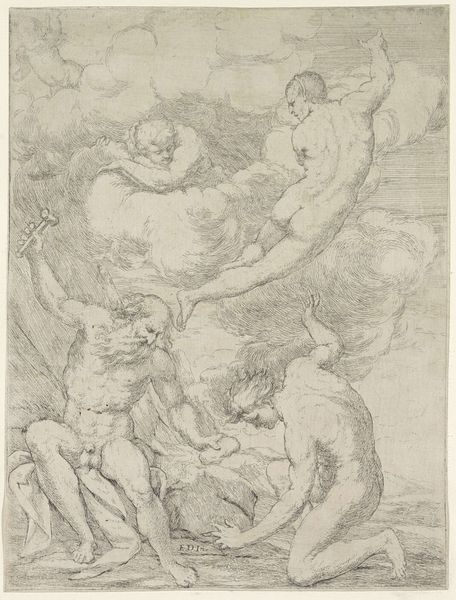
Dimensions: height 243 mm, width 328 mm
Copyright: Rijks Museum: Open Domain
Curator: Well, here we have Cornelis Schut's "Boreas en Oreithyia," likely created sometime between 1618 and 1655. This print is part of the Rijksmuseum's collection. Editor: My first impression is a kind of turbulent dream. There’s this frantic energy to the abduction scene, softened, though, by the floating cherubs. Curator: Indeed. Schut captures Boreas, the north wind, seizing Oreithyia. The tale originates from Greek mythology; Oreithyia was a princess of Athens who rejected Boreas, leading him to simply…carry her off. It became a very popular story with the advent of the printing press. Editor: Right, you can see how this depiction fits into that older visual language. Boreas, despite his aggressive act, has the expected iconography, with the wind blowing back his wild, unruly hair, so he appears quite…majestic even. And Oreithyia’s gesture… it mirrors classical representations of frantic nymphs being pursued. It is as if the terror of the situation is conventional. Curator: And isn't that the point, to a degree? Artists from this era frequently deployed classical narratives to comment on social and political realities. An abduction could be viewed as allegory for foreign policy, a critique of power structures. Editor: That rings true. Plus, there's the obvious element of lust involved here, given the sensuousness of the figures; which introduces layers of tension and desire that seem, dare I say, socially acceptable with such imagery. Are there certain meanings tied up with north winds that come into play, that give them their dangerous associations? Curator: Absolutely. The north wind, often bitter and forceful, came to represent raw power and even untamed desire. We might consider the image’s contemporary reception and recognize that it touches upon the societal roles, ideas of masculinity, and power relations prevalent then. Consider that the printing press allowed this idea to permeate to wide audiences! Editor: So even with such a seemingly fantastical scene, we can still find echoes of the era’s politics, gender roles, even subconscious anxieties reflected back at the viewer through recognizable symbolism. Curator: Precisely! It reveals how historical forces can intertwine even with seemingly timeless myths. Editor: A story isn’t just a story then…It is a fascinating glimpse into cultural narratives from centuries ago that shape what we consider familiar or acceptable.
Comments
No comments
Be the first to comment and join the conversation on the ultimate creative platform.
